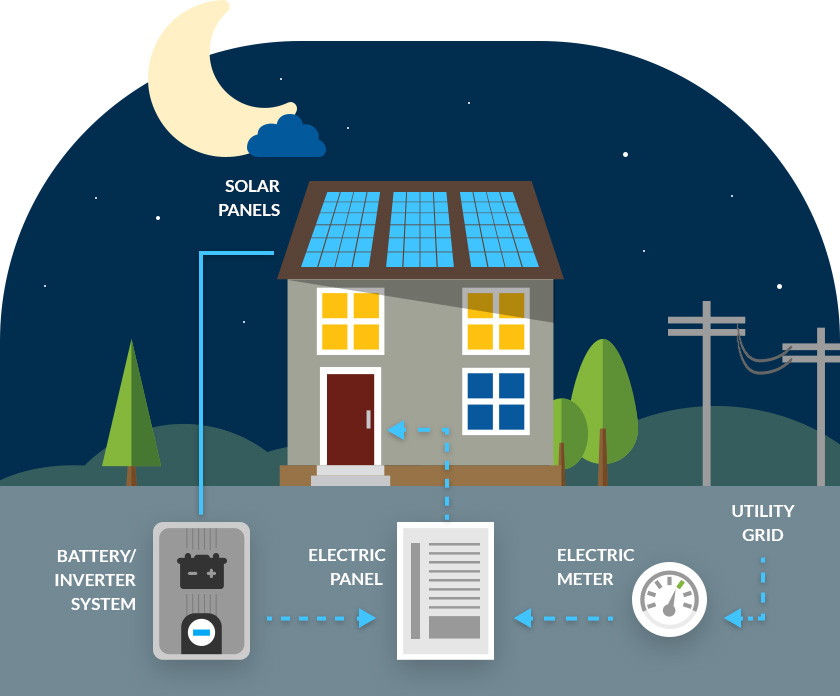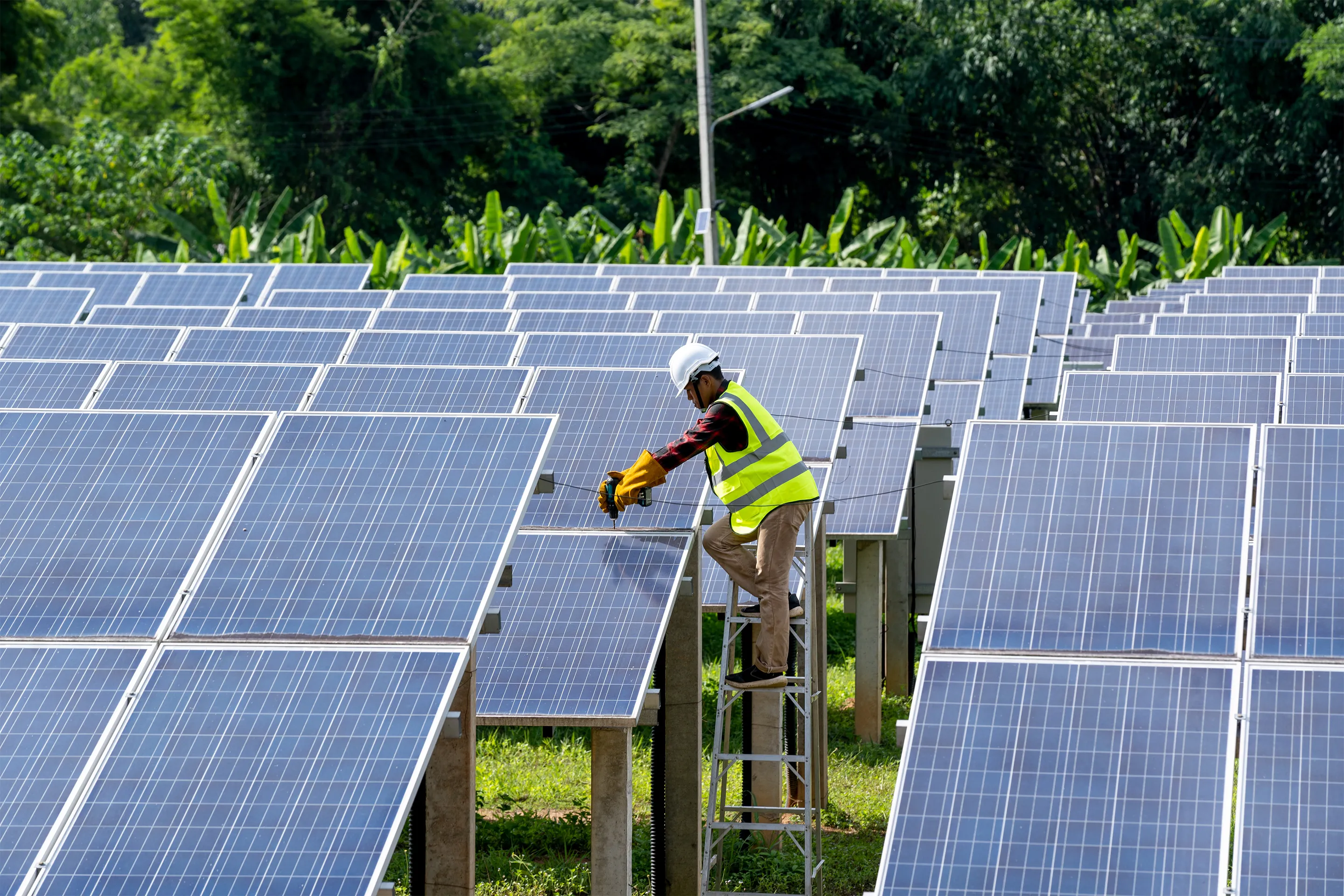Solar Companies In Virginia Things To Know Before You Get This
Solar Companies In Virginia Things To Know Before You Get This
Blog Article
Virginia Residential Solar Installers: Lumina Solar Focuses On Offering Advanced Photovoltaic Solutions For Homes And Businesses
History and Establishing
Have you ever wondered how a solar panel business springs from a mere trigger of motivation into a powerhouse of eco-friendly energy? It often begins with a vision-- one sustained by a mix of innovation, decision, and a pinch of serendipity. The journey of numerous solar business mirrors the evolution of the innovation itself: from bulky, inefficient panels to sleek, high-efficiency marvels harnessing the sun's bounty.
The Early Days
In the late 20th century, when solar power was still a niche concept, leaders planted seeds for what would end up being a global movement. Think of a little workshop filled with curious engineers, tirelessly experimenting with solar batteries. Their enthusiasm was palpable, often driven by a desire to fight climate modification and lower reliance on nonrenewable fuel sources.
One such anecdote is about a creator who, influenced by a camping trip, realized that even in remote areas, the sun could power necessary devices. This basic observation sparked a business's objective to democratize access to tidy energy.
Founding Principles

- Development: Continually pressing the limits of solar technology to enhance effectiveness and sturdiness.
- Sustainability: Devoting to environment-friendly production and minimizing carbon footprints.
- Availability: Making renewable resource services economical and useful for everyday users.
Milestones in Growth
| Year | Secret Event |
|---|---|
| 1985 | Business established in a small garage, focusing on research and development. |
| 1995 | Very first industrial photovoltaic panel product released, gaining regional attention. |
| 2005 | Expanded to international markets, embracing global renewable resource objectives. |
| 2015 | Introduced cutting-edge solar panel technology with enhanced energy conversion. |
Isn't it remarkable how these incremental actions, often overlooked, form the energy landscape today? The solar panel company story is not simply about technology; it has to do with an unrelenting mission for a brighter, cleaner future.

Innovations in Solar Panel Technologies
Ever observed how some photovoltaic panels shine brighter and last longer? It's not magic; it's the science of photovoltaic performance. Modern photovoltaic panel companies invest heavily in technologies like bifacial cells, which record sunlight from both sides, enhancing energy harvest without expanding roofing system space. Have you ever questioned why some panels perform much better on cloudy days? That's due to advances in thin-film solar innovation, which thrives under diffused light conditions.
Product Variations Tailored to Unique Requirements
One size never fits all. Solar panel companies now use:
- Monocrystalline panels for maximum effectiveness and streamlined aesthetics, perfect for space-constrained roofs.
- Polycrystalline panels, which offer an affordable alternative without compromising too much output.
- Building-integrated photovoltaics (BIPV), merging solar tech flawlessly into architectural components like windows and exteriors.
Picking the right product isn't practically in advance cost; it has to do with matching your environment, energy goals, and long-term cost savings. Homes shaded by trees need panels that excel in low-light scenarios, something numerous ignore up until energy bills climb unexpectedly.
Technical Tips for Optimal Choice
- Examine the temperature level coefficient-- lower values indicate panels lose less performance on hot days.
- Try to find panels with boosted anti-reflective finishings to make the most of light absorption.
- Think about the panel's warranty not just for defects, but for guaranteed power output over decades.
- Don't undervalue the value of the inverter innovation matched with the panels; it can make or break your system's performance.
Beyond Panels: Emerging Trends
Picture solar panels that adjust their angle immediately to go after the sun-- tracking systems are becoming more available, increasing yield significantly. Or solar tiles that blend invisibly into your roofline, check here transforming your home into a silent, self-dependent power generator. These innovations are reshaping what a solar panel business offers-- not just items, however integrated energy solutions.
Market Existence and Global Operations
Ever question why some photovoltaic panel companies appear to sprout up in every corner of the globe while others barely make a ripple? The difference lies not just in technology however in mastering the art of navigating diverse markets. Expanding worldwide is like planting seeds in various environments-- you must comprehend each environment's unique conditions to thrive.
Take, for circumstances, the complex dance of logistics and supply chain management. Shipping panels midway across the world isn't just about range; it has to do with timing, custom-mades, tariffs, and adjusting to regional demand fluctuations. A company with robust international operations anticipates these variables, guaranteeing panels get here on schedule without inflating expenses. This foresight is no small feat and often separates industry leaders from fans.
Secret Methods for Expanding Market Presence
- Localized production: Developing production centers near target audience minimizes shipping delays and import intricacies.
- Strategic partnerships: Teaming up with local firms speeds up market penetration and builds trust.
- Adaptive item style: Tailoring photovoltaic panel tech to weather, sun intensity, and facilities nuances boosts efficiency and approval.
What about the human aspect? Solar panel business operating globally need to reconcile cultural distinctions and regulative nuances without forgeting their core objective. For example, what works in a sun-drenched desert may falter in a damp seaside region. In some cases, the most innovative solution is just listening-- taking in local insights to fine-tune innovation and technique.
Specialists typically recommend a phased rollout rather than a shotgun expansion. Why risk overextension when determined development develops sustainable momentum? Scaling sensibly suggests balancing ambition with functional strength - Residential Solar Panels Virginia. In the race for sustainable energy supremacy, perseverance can be as important as speed.
Environmental Impact and Sustainability Practices
When solar panels first emerged, lots of assumed they brought absolutely no ecological luggage. The reality is more nuanced. The production of photovoltaic cells includes rare earth metals and energy-intensive procedures, which can leave a sizable carbon footprint before the panels even reach rooftops. The real ecological cost depends greatly on the sustainability practices used by the photovoltaic panel business throughout the lifecycle of their items.
How frequently do we pause to consider what takes place to solar panels at the end of their useful life? Unlike batteries or electronic devices, solar panels can last 25-30 years, however disposal and recycling pathways remain underdeveloped in numerous areas. A business devoted to decreasing environmental harm will have a robust plan for recycling photovoltaic products, restoring valuable silicon, glass, and metals to prevent garbage dump build-up.
Key Sustainability Techniques
- Using low-impact production techniques that decrease water and energy usage.
- Carrying out closed-loop systems to recycle production waste back into brand-new panels.
- Participating in transparent supply chain audits to guarantee ethical sourcing of raw products.
- Creating panels for easier disassembly to help future recycling efforts.
It's worth noting that some solar companies have originated ingenious techniques, such as incorporating eco-friendly parts or utilizing less harmful chemicals during fabrication. This not only reduces ecological strain but likewise sets a precedent for the industry. The concern stays: can the solar market really pivot towards a circular economy model without compromising effectiveness or affordability?
Professional Tips for Assessing Sustainability
- Inquire about the company's dedication to carbon-neutral manufacturing and whether they offset emissions.
- Investigate if they partner with licensed recycling facilities committed to solar panel waste.
- Try to find transparency reports detailing ecological effects and sustainability objectives.
- Think about the longevity and service warranty of panels as an indirect measure of resource performance.
In the end, selecting solar power ought to imply more than just slashing electricity expenses; it has to do with nurturing a future where energy is harvested properly and waste is thoughtfully handled. Photovoltaic panel companies that embrace this viewpoint not only illuminate homes but likewise cast a brighter light on sustainable development.
Report this page